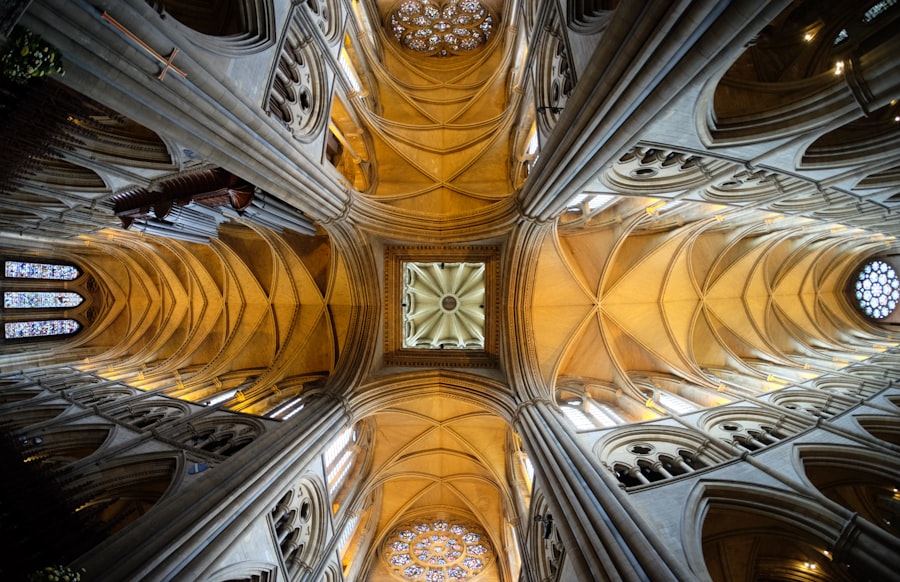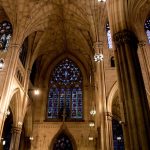Download links
How to install 8k8 Manila Cathedral: A Stunning Landmark in the Philippines APK?
1. Tap the downloaded 8k8 Manila Cathedral: A Stunning Landmark in the Philippines APK file.
2. Touch install.
3. Follow the steps on the screen.
Description
The Manila Cathedral, officially known as the Cathedral-Basilica of the Immaculate Conception, has a rich and storied history that reflects the broader narrative of the Philippines itself. Its origins can be traced back to 1581 when the first church was constructed on the site, serving as the seat of the Archdiocese of Manila. This initial structure was made of bamboo and nipa palm, a humble beginning that belied the cathedral’s future significance.
Over the centuries, the cathedral has undergone numerous reconstructions and renovations, each reflecting the evolving architectural styles and the socio-political climate of the time. The cathedral has been rebuilt several times due to natural disasters, particularly earthquakes. The most significant of these was the earthquake of 1863, which devastated much of Manila and led to a complete reconstruction of the cathedral under the direction of architect Francisco de la Cruz.
This new structure was completed in 1879 and was notable for its neo-Romanesque style. However, it was not long before disaster struck again; in 1945, during World War II, the cathedral was severely damaged by bombings. The post-war reconstruction efforts led to a modernist redesign by architect Fernando Ocampo, which was completed in 1958.
Each iteration of the cathedral tells a story of resilience and adaptation, mirroring the history of the Filipino people.
Key Takeaways
- Manila Cathedral has a rich history dating back to the 16th century, with the current structure being the 8th iteration of the cathedral.
- The architectural features of Manila Cathedral showcase a blend of different styles, including Romanesque, Renaissance, and Baroque influences.
- The cathedral has become a symbol of resilience, having been destroyed and rebuilt multiple times due to natural disasters and war.
- Several significant events have taken place at Manila Cathedral, including the first Philippine Plenary Council and the visit of Pope John Paul II in 1981.
- Restoration and preservation efforts have been ongoing to ensure the longevity of Manila Cathedral, including the reconstruction of the cathedral after it was heavily damaged during World War II.
Architectural Features of Manila Cathedral
The Grand Façade and Nave
The current structure showcases a blend of Romanesque and Gothic styles, characterized by its grand façade adorned with intricate carvings and sculptures. The imposing entrance is framed by a series of arches that lead into a spacious nave, which is accentuated by high ceilings and beautiful stained glass windows.
Stained Glass Windows and Bell Tower
These windows depict various biblical scenes and saints, adding a vibrant touch to the interior while also serving as a source of natural light that enhances the spiritual atmosphere. One of the most striking features of the cathedral is its impressive bell tower, which stands at approximately 80 feet tall. This tower houses several bells, each with its own unique history and significance.
Altar and Local Materials
The largest bell, known as the “Great Bell of Manila,” weighs over 1,000 kilograms and is rung during important liturgical events. Additionally, the cathedral’s altar is a focal point of its interior design, featuring a stunning retablo that showcases intricate carvings and gold leaf detailing. The use of local materials, such as adobe bricks and coral stone, not only reflects the architectural practices of the time but also connects the cathedral to its geographical context.
Manila Cathedral: A Symbol of Resilience

Manila Cathedral stands as a powerful symbol of resilience for both the city and its inhabitants. Throughout its tumultuous history, it has endured numerous challenges, including earthquakes, fires, and wars. Each time it faced destruction, it was rebuilt with renewed vigor, embodying the spirit of the Filipino people who have faced their own trials throughout history.
This resilience is not merely physical; it resonates deeply within the cultural identity of Manila and serves as a reminder of the strength found in community and faith.
During periods of national crisis, such as during World War II or after natural disasters like Typhoon Haiyan in 2013, the cathedral has served as a gathering place for prayer and reflection.
It has hosted countless masses and vigils that unite people in their shared experiences of loss and recovery. The enduring presence of Manila Cathedral in the heart of the city symbolizes not only religious devotion but also a collective resilience that defines the Filipino spirit.
Significant Events at Manila Cathedral
| Date | Event | Description |
|---|---|---|
| 1581 | Construction | Manila Cathedral was originally built in 1581, making it one of the oldest churches in the Philippines. |
| 1762 | Destruction | The cathedral was destroyed during the British occupation of Manila in 1762. |
| 1958 | Reconstruction | The cathedral was reconstructed and completed in 1958, after being heavily damaged during World War II. |
| 2012 | Restoration | The cathedral underwent a major restoration project to preserve its historical and cultural significance. |
Over its long history, Manila Cathedral has been the site of numerous significant events that have shaped both religious and national narratives. One notable event was the canonization of San Lorenzo Ruiz in 1987, which marked him as the first Filipino saint in history. This momentous occasion drew thousands of devotees who gathered at the cathedral to celebrate their cultural heritage and religious identity.
The event underscored the importance of Manila Cathedral as a central hub for Catholicism in the Philippines. Another significant event occurred in 2015 when Pope Francis visited Manila during his apostolic journey to Asia. The pope celebrated a mass at Manila Cathedral that was attended by thousands, including government officials and religious leaders.
This visit not only highlighted the cathedral’s role as a spiritual center but also emphasized its importance in contemporary Filipino society. The mass served as an opportunity for Filipinos to express their faith and solidarity in a rapidly changing world, reinforcing the cathedral’s status as a symbol of unity amidst diversity.
Restoration and Preservation Efforts
The preservation and restoration efforts surrounding Manila Cathedral are crucial for maintaining its historical integrity and cultural significance. In recent years, various initiatives have been undertaken to ensure that this architectural gem remains a vital part of Manila’s landscape. These efforts have included structural assessments to address any damage caused by natural wear and tear or environmental factors.
Experts have worked diligently to restore original features while also incorporating modern techniques to enhance durability without compromising aesthetic value. One notable restoration project took place in 2014 when extensive renovations were carried out to address issues related to water damage and structural stability.
The restoration process was guided by historical research to ensure that any changes made were in line with the original design principles established by previous architects. Such efforts not only preserve the physical structure but also honor its historical legacy for future generations.
Visiting Manila Cathedral: What to Expect

Interior Beauty and Tranquility
Inside, visitors can admire the stunning stained glass windows that cast colorful light across the nave, creating an ethereal ambiance that invites contemplation. As one explores further into the cathedral, they will encounter various chapels dedicated to different saints, each adorned with unique artwork and altars that reflect diverse aspects of Catholic devotion.
Guided Tours and Historical Insights
Guided tours are available for those interested in delving deeper into the history and architectural details of this iconic structure.
Experiencing Community Life and Spiritual Solace
Additionally, attending a mass or special liturgical event provides an opportunity to experience firsthand the vibrant community life that thrives within these walls. Whether one is seeking spiritual solace or simply appreciating architectural beauty, Manila Cathedral offers an unforgettable experience steeped in history and culture.
If you’re interested in exploring more innovative technologies, you may want to check out the article on 8k8 Larong Pangingisda: Teknologi Baru untuk Meningkatkan Hasil Tangkapan. This article discusses how new technology is being used to improve fishing yields, which could be a fascinating parallel to the advancements being made at the Manila Cathedral.
FAQs
What is the 8k8 Manila Cathedral?
The 8k8 Manila Cathedral is an article that discusses the historical and architectural significance of the Manila Cathedral in the Philippines.
When was the Manila Cathedral built?
The original Manila Cathedral was built in 1571, but it has been destroyed and rebuilt several times due to natural disasters and wars. The current structure was completed in 1958.
What is the architectural style of the Manila Cathedral?
The Manila Cathedral features a combination of architectural styles, including Baroque, Neo-Romanesque, and Neo-Byzantine influences.
What is the significance of the Manila Cathedral?
The Manila Cathedral is a symbol of the Philippines’ rich religious and cultural heritage. It has played a significant role in the country’s history and has been the site of important events, including papal visits and state occasions.
Is the Manila Cathedral open to the public?
Yes, the Manila Cathedral is open to the public for worship, prayer, and guided tours. Visitors are welcome to explore the cathedral’s interior and learn about its history and significance.
Are there any special events or services held at the Manila Cathedral?
The Manila Cathedral hosts regular religious services, including Mass and other liturgical celebrations. It also serves as a venue for special events such as weddings, baptisms, and religious processions.
Can visitors take photographs inside the Manila Cathedral?
Photography is generally allowed inside the Manila Cathedral, but visitors are encouraged to be respectful and mindful of ongoing religious services and ceremonies.
Is there an admission fee to enter the Manila Cathedral?
There is no admission fee to enter the Manila Cathedral. However, donations for the upkeep and maintenance of the cathedral are welcome and appreciated.





